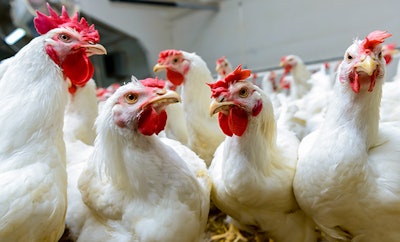
HKScan used a combination of artificial intelligence and smart cameras to identify and monitor broiler activity, welfare and behavior in a recent pilot project.
“As part of HKScan’s responsibility, the Agrofood Ecosystem work develops animal welfare and its monitoring with artificial intelligence and cameras,” said Leena Pohjola, a veterinarian at HKScan.
“Broiler behavior is an issue that has been challenging to monitor and evaluate. This HKScan pilot project tries to solve this issue.”
Benefits of automated data collection
The pilot project began in January at the company’s Kariniemen Kotitila farm.
Smart cameras were used to monitor broiler activity and welfare, even when the farmer was not present. Artificial intelligence quantified the data collected by the smart cameras, identifying the forms of natural behavior displayed by the broilers including pecking, bathing in litter and preening.
“Cameras will never replace producer’s own eyes. However, through the cameras we are able to follow the activity and behaviors 24/7 during the production period,” Pohjola explained.
“We hope that as we get more camera monitored batches and more behavioral data we start to see certain trends that can help us and farmer to better understand the differences between broiler batches.”
The data collection approach has already been used on two flocks of birds and has revealed variations in behavior as the birds age. For example, younger birds preen themselves more, while the older broilers were more apt to prefer bathing or scratching and pecking the litter.
Enrichment will be studied next
Future projects involving artificial intelligence and smart cameras at the farm will study the effects of enrichment, which promote natural behaviors and are a key component of any animal welfare program.
“Data collection and modeling will continue on the Kariniemen Kotitila farm. The third flock of birds in the pilot project was given new enrichment (bales of cutter and moss and peat moss ramps) to the hall with the goal of further strengthening the natural behavior,” said Pohjola.
Like what you just read? Sign up now for free to receive the Poultry Future Newsletter.


















